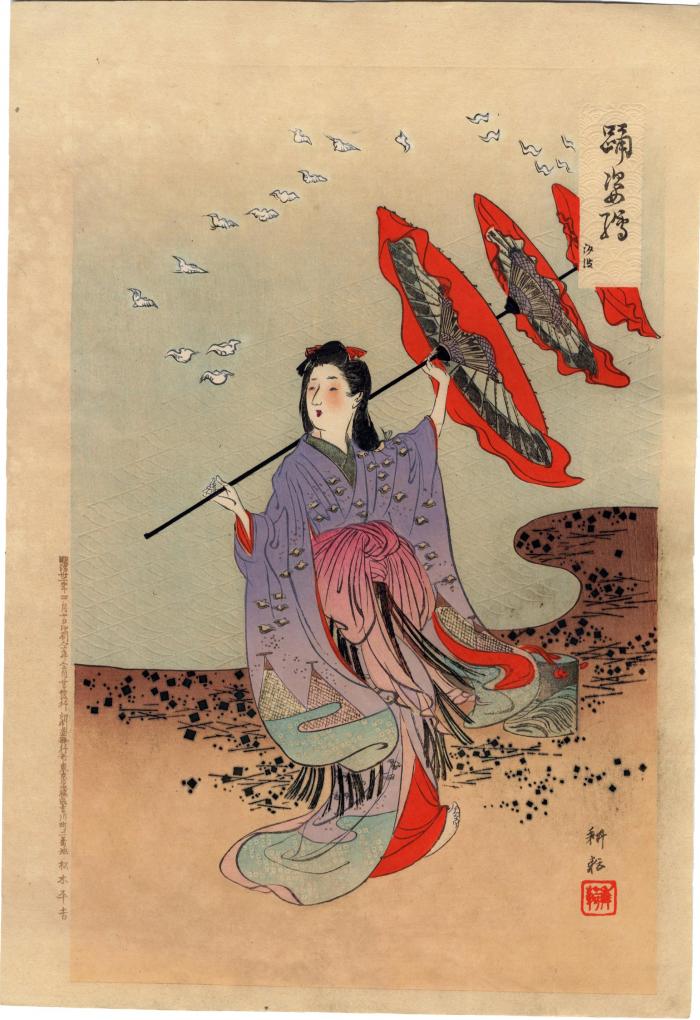Tsukioka Kōun (月岡耕耘) (artist )
Illustration of Dancers: 'Odori Sugata-e' (踊姿絵) Shiomai (汐汲)
04/1899
9.625 in x 14.125 in (Overall dimensions) Japanese woodblock print
Signed: Kōun (耕耘)
Date: Meiji 32, 4th Month, 10th Day
明治卅二年四月十日d
Publisher: Matsui Heikichi (松木平吉)
aka Daikokuya Heikichi
Ritsumeikan University
National Library of Australia
Honolulu Museum of Art Below is a loose translation of Japanese language text accompanying the online copy of this print at the National Library of Australia:
A performance borrowed from Noh's “Matsukaze”. There is a legend that the brother of Narihira Arihara: Yukihira loved her sister Ama, Matsukaze and Murasame when she was swept to Suma. It is thought that it was incorporated into Noh and became “Matsukaze”, and eventually it was also incorporated into Kabuki dance and Japanese dance. Shikumi takes the form that a princess, Matsukaze, wearing a cocoon hat and a hunting garment, which is a keepsake of Yukihei Akihara, dances in the spirit of Yukihira. Eight years of culture (1811) Jiang is an independent program that is one of the seven changes in Ichimuraza's “Seven Consecutive Flowers”. Performance time: Approximately 22 minutes.****
This print represents the dance of the salt collector. There are at least 14 prints in this series.
The inscription on the left just outside of the image reads:
明治卅二年四月十日印刷仝年仝月廿日発行
If you enlarge the image you will see that the waves in the water behind her are embossed in one pattern, while the waves in the title cartouche are embossed in a more traditional Japanese wave pattern motif.
Meiji era (明治時代: 1868-1912) (genre)
Daikokuya Heikichi (大黒屋平吉) (publisher)
Ariwara Narihira (在原業平: from 825 to 880) (role)
